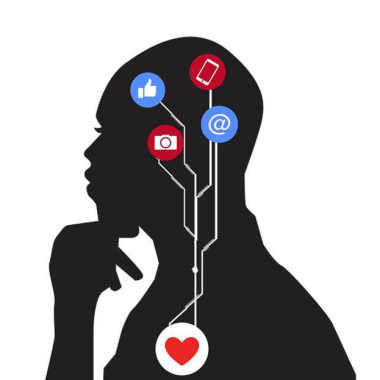by Joanne Goodman, University of Strathclyde psychology student
Halloween is undoubtedly a globally anticipated occasion, which provides autumn with a final celebration for all ages. Initially, some 2,000 years ago, the festivities were a means to ward off bad spirits by lighting bonfires and wearing intimidating costumes. Over time it has become a time for pumpkin carving, trick-or-treating, dressing up and partying. However the commercialisation of the holiday has come with its share of negativity and has resulted in the creation of some problematic themes, such as the sexualisation of females and mental health stigma.

Ghoul Power
Women are often sexualised in Western culture, and we see this clearly in entertainment, the media, the fashion and beauty industries, advertising, in fact …. everywhere. Halloween plays on these trends and exaggerates them further.
People tend to tackle this issue by saying things like, “If you don’t want to be sexualised, don’t dress sexy”, but these comments dismiss the actual problem, as often it’s impossible to escape the overly sexual costumes despite the strongest intentions. Even nonsexual outfits, like police officers, nurses or animals are often designed to be revealing and tight fitted (Emamzadeh, 2018). Indeed research has shown that women wearing revealing costumes are sexually objectified by both men and other women, and men give stronger responses to such dress-up choices (Lennon et al, 2016).
Failure to acknowledge that females are actively being advertised these provocative costumes, regardless of their sexual nature, ultimately means that society is turning a blind eye to young women being sexualised and accepting that they will inevitably engage and/or be influenced by it. What is the problem with that? Shouldn’t we appreciate someone’s beauty when we see it? “There’s a difference between appreciating a person’s beauty and objectifying a whole group of people. While appreciation acknowledges someone’s looks as one small part of who they are while still viewing them as an individual, objectification reduces someone to their looks and to the stereotype of a group they belong to”, says an article in Bustle. And that’s a problem.
Society’s objectification of girls and women can lead them to disordered eating, difficulties in school due to stereotypes about their intellectual abilities, depression, ignoring their other qualities and inner beauty; and for men it could mean problems with intimacy to women and with realistic expectations about them (see more from Bustle).
Soft But Spooky
Although there has been significant progress in the reduction of stigma surrounding mental illness, it still remains as one of the leading factors in people not seeking help. Certain components of Halloween celebrations have undoubtedly contributed to this.
When people wear costumes that depict psychos, straightjackets, lunatics, insane asylum escapees and so on, they maintain the stereotypes that mental illness is something that is scary, abnormal and cruel (Serani, 2019). For the most part, people don’t wear these costumes or decorate their houses with the intention to contribute to the stigmatisation of mental health, “but in some ways that is even more concerning, because these views have been so widely accepted without regard for the damage they can do” says a blog post by the National Alliance on Mental Illness.
The fact of the matter is that these attitudes and behaviours send messages to people who have mental illness that this is shameful and disturbing.
It’s Not All Doom And Gloom!
Halloween is a time for celebration with your friends and family, and as important as it is to be mindful and respectful towards yourself and others, it’s just as important to have fun! There are small and easy steps which anyone can take to make the Halloween festivities fun and respectful to all. For instance;
- Be conscious of your costume and decorative choices. Ask yourself the questions “Am I perpetuating damaging stereotypes?” and “Will this make a negative impact in the future?”, “What are better ways to have fun?”
- Start those uncomfortable conversations. It can be intimidating to go into a conversation against cultural norms, however taking the first step is the only way to initiate change. And that can be very empowering!
